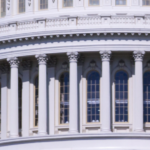On April 1, 2019, CMS implemented a new series of Common Working File (CWF) edits that are intended to better identify ground ambulance transports that are furnished in connection with an outpatient hospital service that is properly bundled to the skilled nursing facility (SNF) under the SNF Consolidated Billing regime.
These edits work by comparing the ambulance claim to the associated outpatient hospital claim. Hospital claims were already subject to CWF edits designed to identify outpatient hospital services that should be bundled to the SNF. These hospital edits operate by referencing a list of Healthcare Common Procedure Coding System (HCPCS) or Current Procedural Terminology (CPT) codes that correspond to outpatient hospital services that are expressly excluded from SNF Consolidated Billing. Hospital claims for outpatient services that are submitted with one of these excluded codes bypass the existing CWF edits, and are then sent to the appropriate Medicare Administrative Contractor for further editing and payment. Hospital claims submitted without one of these codes are denied for SNF Consolidated Billing.
The new ambulance edits will extend these process one step further. The ambulance claim will be associated with the outpatient hospital claim on the same date. To the extent that hospital claim is bundled under SNF Consolidated Billing, the associated ambulance claim will also be bundled. To the extent the hospital claim is unbundled, the associated ambulance claim will be unbundled.
In order for these new edits to work properly, there must be an outpatient hospital in Medicare’s claim history. If the ambulance claim beats the hospital claim into the system, the ambulance claim will be rejected. If and when an outpatient hospital claim with the same date of service enters Medicare’s system, the initial rejection of the ambulance claim will be overturned, and the ambulance claim will be reprocessed using the same edits.
It is important to note that the new edits were designed to reject the ambulance claim as a bundled service unless the hospital claim indicates that it should not be bundled. In other words, these edits are designed to be “over inclusive.” This over-inclusiveness creates the potential for ambulance denials in situations that, on their face, would not appear to be bundled.
A few examples will help illustrate this point. Imagine a situation where the patient elects, for whatever reason, to pay out-of-pocket for their hospital care (in a situation where that care would not be bundled to the SNF), and, as a result, the hospital does not submit a bill to Medicare for its services. Based on how the new edits are designed, your ambulance claim for the transport to that excluded service will be rejected based on the lack of a hospital claim. Or maybe the patient has both Medicare and the V.A., and has elected to have the V.A. be the primary payer for their required hospital care. Again, there would likely be no outpatient hospital claim submitted to Medicare on that date of service, resulting in the rejection of your ambulance claim.
I can see your point, but those examples are pretty far-fetched. How big an issue is this really?
I agree those examples are pretty far-fetched. However, there are other situations that create the same problem. For example, what about an emergent response to transport an SNF patient to the hospital for necessary emergency services? Imagine if you are called to respond late at night (e.g., 11:30 p.m.) tonight. Now imagine that, by the time you get to the patient, load them into the vehicle, and transport them to the ED, it has crossed over midnight into the next day.
What date of service is going to be on the hospital’s claim? Almost certainly, the hospital will use tomorrow’s date. As a result, when your claim hits Medicare’s system, there will not be an associated hospital claim, which will result in your claim being rejected as the responsibility of the SNF. In this situation, Medicare’s edit has worked as intended, but the result is the denial of a claim that should be separately payable by Medicare Part B.
Okay, I can see how this might be annoying,
but I can appeal the claim and likely win on appeal, right?
Yes and no. The problem is that you are not likely to win on either of the first two levels of appeal, as they are likely going to rely upon the information in the CWF. I can see you possibly winning your appeal at the ALJ level…5 to 7 years from now.
In other words, the appeals process is unlikely to provide an acceptable resolution. Instead, I think the majority of ambulance providers are going to look to the SNFs to make good in these situations. Of course, the SNFs are likely going to disclaim liability, arguing (correctly) that ambulance transportation to an ED is an excluded service.
This is where the agreement with the SNF comes into play. One key purpose of contracts is to allocate known risks between the parties. In this instance, the “risk” that needs to be addressed is the possibility that Medicare might incorrectly reject your claim thinking it is bundled to the SNF. I would argue that this risk should be absorbed by the SNF. The transport to the ED should have suspended the patient’s SNF stay, which would have allowed you to receive a separate payment from Medicare. However, the fact that your claim was rejected is proof positive that the CWF does not reflect the suspension of the patient’s SNF stay. Indirectly, it also serves as proof that the SNF received a per diem payment for the patient on that date. To me, the fact that they accepted the per diem payment means they accepted the risk of a bundled ambulance service on that date. I would also argue that it was their failure to properly suspend the patient’s SNF stay that set in motion your denial. Either way, I would be looking to the SNF for payment.
Based on my experience, the typical agreement with an SNF does not address this situation. Frequently, these agreements do not even address the specifics of SNF Consolidated Billing. Instead, I tend to see general language indicating that the ambulance provider will bill the SNF when payment responsibility lies with the SNF under an applicable federal or state health care program. I doubt that language is going to convince an SNF to take financial responsibility for the situation discussed above.
The good news is that your existing agreements can easily be revised to address this situation. The language I would recommend is something along the lines of:
“The parties acknowledge and agree that a denial from Medicare for SNF consolidated billing shall constitute conclusive evidence that a transportation service is the financial responsibility of the facility.”
In sum, the new SNF Consolidated Billing edits are going to increase the frequency with which we are forced to look to the SNFs for payment. In most instances, it will be a situation where the SNF is legally responsible under SNF Consolidated Billing. However, there will also be situations where the over-inclusive nature of the edits results in the claim being incorrectly denied as the SNF’s responsibility. The question becomes how you want to handle these incorrect denials. Do you want to appeal and hope CMS reverses its decision? Or do you want to hold the SNF responsible? If you want to hold the SNF responsible, you will likely need to revise your agreements with the SNFs.
Have an issue you would like to see discussed in a future Talking Medicare blog?
Please write to me at bwerfel@aol.com.







